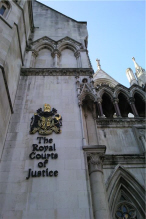The need to plead
 Andrew Williams examines the tort of misfeasance in public office and why a recent claim was struck out.
Andrew Williams examines the tort of misfeasance in public office and why a recent claim was struck out.
Sometimes the cases that strike fear into the hearts of lawyers are seemingly innocuous ones that almost pass by under the radar unnoticed. For a recent example, look no further than Sandhu v Revenue and Customs Commissioners [2017] EWHC 60 (QB).
Before considering that case, though, I’ll take a step back and attempt to provide an overview of the tricky tort in question, Misfeasance in Public Office.
There are two limbs to the tort.
The first involves establishing what is often called targeted malice by a public officer. This is conduct specifically intended to injure someone. It involves bad faith in the sense of the exercise of public power for an improper or ulterior motive.
The second is the illegality limb. This applies where a public officer acts knowing that she has no power to do the act complained of and that the act will probably injure the claimant; it involves bad faith inasmuch as she doesn’t honestly believe that her act is lawful.
The essence of the cause of action as a whole is therefore a deliberate and dishonest wrongful abuse of the powers given to a public officer.
Both limbs involve bad faith. In practice, most cases of targeted malice will also be actionable under the illegality limb.
The alleged tortfeasor must be a public officer even though she will generally not be the defendant. Usually the claim will be brought against the institution in question on the basis of vicarious liability.
Last, misfeasance in public office is not actionable without proof of material damage. Encouragingly for claimants, exemplary damages may be awarded.
Needless to say, there is much more to this tort than I have summarised, but hopefully I’ve said enough to put the Sandhu case in context.
In 2003 Mr Sandhu was convicted of cheating the public revenue and was sentenced to imprisonment. In 2006 the Court of Appeal quashed the conviction on the grounds that HMRC had failed to disclose material information. A re-trial was ordered and just before it was due to start in May 2007, further information was disclosed to Mr Sandhu; the upshot was that he was acquitted. Almost 6 years after his acquittal he sued HMRC for damages based on misfeasance in public office.
That leads us to the key question: what was the information that HMRC had failed to disclose? Shortly before the 2007 re-trial HMRC disclosed an email from 2003 that should have been disclosed to the defence before the 2003 trial. The email had been sent to one of the customs officers expressing the view, backed with relevant information, that one of the key prosecution witnesses could not be treated as a witness of truth.
The 2017 reported decision is Lavender J’s determination of HMRC’s application to strike out the claim. In passing I should mention that there was no application before him to amend the claim.
The judge did indeed strike out the claim. His main reason was that it was statute-barred.
It almost goes without saying that the cause of action had accrued by no later than 2003 when there was the failure to disclose evidence to the defence team.
So Mr Sandhu relied on s. 32 of the Limitation Act 1980 which provides, among other matters, that where any fact relevant to a cause of action has been deliberately concealed from the claimant by the defendant, the limitation period shall not begin to run until the claimant with reasonable diligence could have discovered the concealment.
The only significant event that occurred during the 6 years prior to the issue of proceedings was the acquittal during May 2007. All the facts that were key to bringing the claim – in particular, the non-disclosure – were known to Mr Sandhu more than 6 years before the claim was brought. Accordingly the claim was brought too late.
Yet the case is possibly most memorable for Lavender J’s comments about the pleading. He observed that that Particulars of Claim failed to identify the individual(s) whom Mr Sandhu alleged had the necessary state of mind in order to establish the tort. Since the names of the three HMRC officers who had received the undisclosed email were known, it was surprising that the Particulars of Claim failed to identify the public officers in question.
After all, a claimant is required “to identify the person or people said to have acted with subjective recklessness and to establish their bad faith. An institution can only be reckless subjectively if one or more individuals acting on its behalf are subjectively reckless, and their subjective state of mind needs to be established.”
What is more, the pleading had “not given any details of the case which [the claimant] seeks to advance, either in relation to these three officers or more generally, as to the state of mind necessary for an allegation of misfeasance in public office”. The judge went on to provide examples of what he might have expected. For instance, there was no allegation of an agreement between the individuals to conceal the relevant information or even a claim that any individual did intend to conceal it.
Lawyers, who are used to waking at 3am worrying about a case, hardly need reminding of the importance of getting pleadings right. This case is a scary example of what can happen when it all goes wrong …
Andrew Williams is a barrister at Exchange Chambers in Manchester. He can be contacted on 0845 300 7747 or This email address is being protected from spambots. You need JavaScript enabled to view it..
